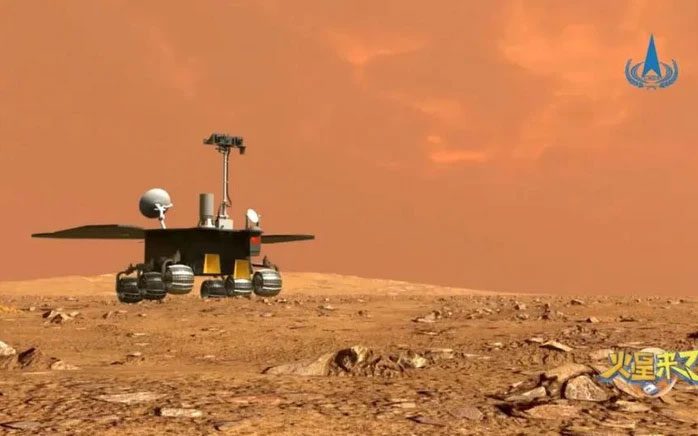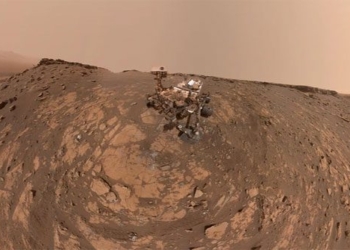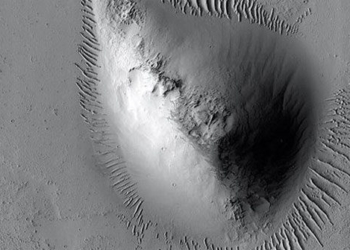Before its “demise,” the Zhurong rover from China successfully utilized ground-penetrating radar to detect mysterious geometric blocks buried 35 meters deep beneath the Utopia Planitia region of the Red Planet.
According to Universe Today, these mysterious structures on Mars resemble wedge shapes but feature a complex, irregular polygonal face. Their widths range from a few centimeters to several dozen meters.
Scientists believe that these mysterious blocks are the result of Mars’ freeze-thaw cycles billions of years ago, but they may also be related to volcanic activity and the cooling process of lava.

China’s Zhurong rover operating on the Red Planet – (Photo: CNSA).
The objects have been revealed thanks to the analysis of Zhurong’s “legacy”, conducted by scientists from the Institute of Geology and Geophysics at the Chinese Academy of Sciences.
Zhurong (Zhù Róng) is a lander designed in the form of a robotic rover, capable of navigating the complex terrains of Mars and studying both the surface and subsurface structures of the Red Planet.
Currently, the Zhurong rover has ceased operations after being struck by an extreme dust storm on Mars, which covered its solar panels. However, the massive dataset it managed to collect is expected to yield significant research insights for years to come.
In this research, the Chinese team also utilized data from two orbiters: Tianwen-1 from China and Mars Express from the European Space Agency (ESA).
The results published in Nature indicate that a total of 16 geometric blocks have been identified within an area measuring 1.2 kilometers in diameter. This suggests that similar structures may be widespread throughout the Utopia Planitia region.
These structures may have formed 3.7 to 2.9 billion years ago during the Late Hesperian period, also known as the “Early Amazonian” period of Mars, potentially coinciding with the end of its ancient wet environment.
While strange polygonal terrains have been observed in several areas on Mars, this is the first time buried structures have been documented.
Their presence may be linked to a series of activities ranging from snowfall in the atmosphere to phenomena within Mars’ subsurface aquifer, combined with the impacts of multiple flooding events.
Regardless, climate change is the driving force behind the emergence of these geometric blocks. Therefore, studying them could help unravel the mysteries surrounding the climate changes of the Red Planet at the moment it transformed from a habitable world like Earth to the lifeless planet we see today.





















































